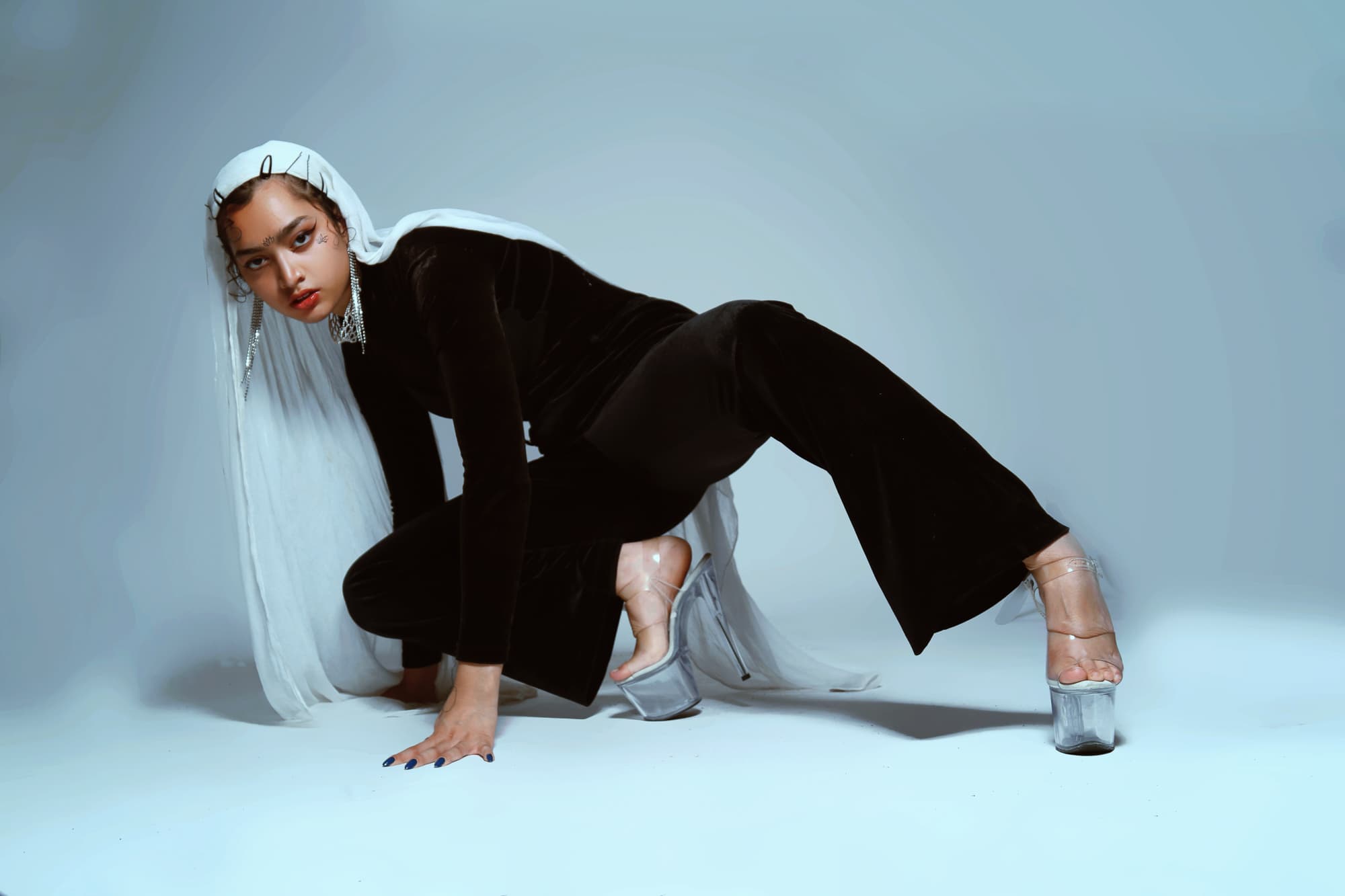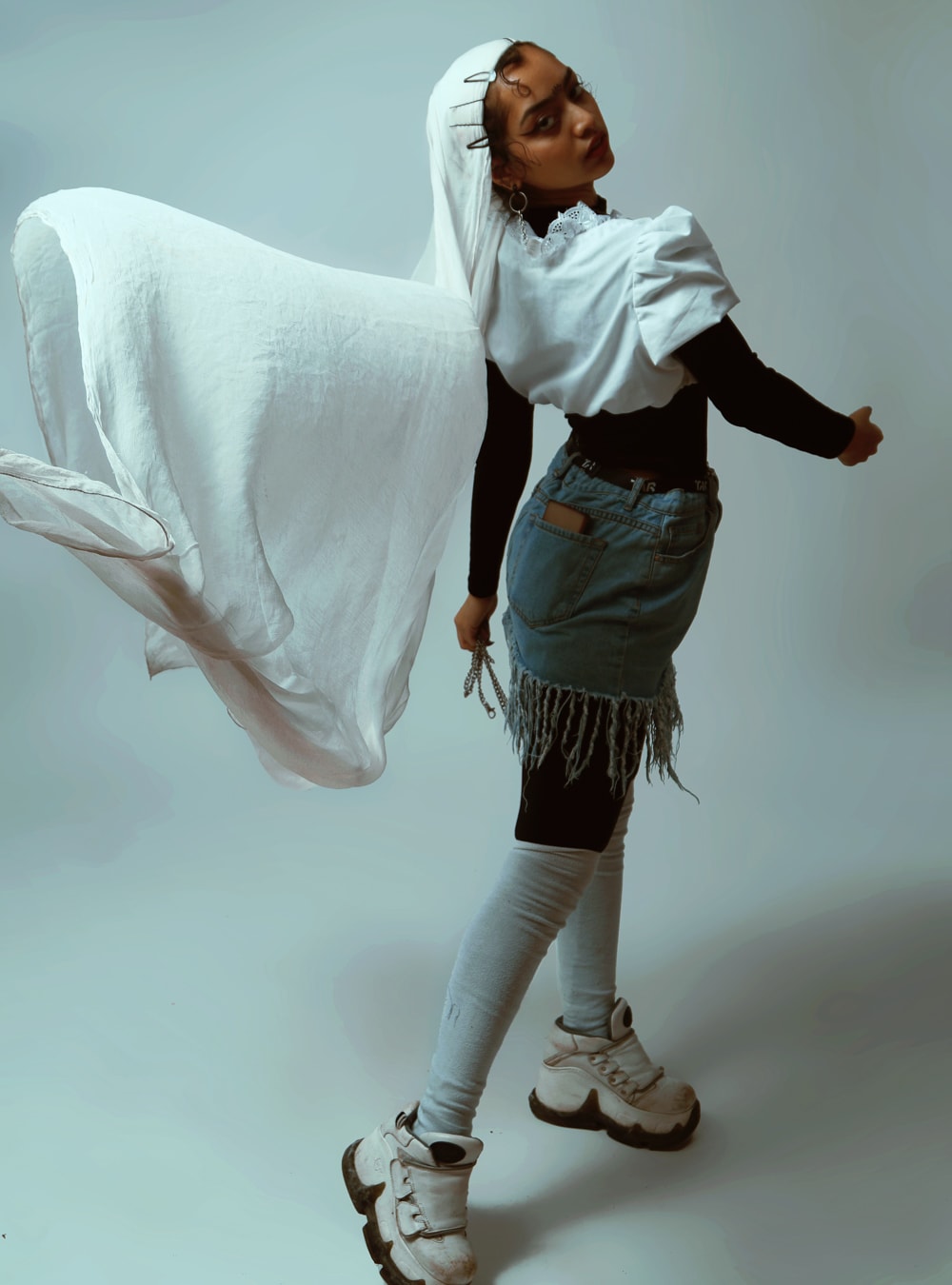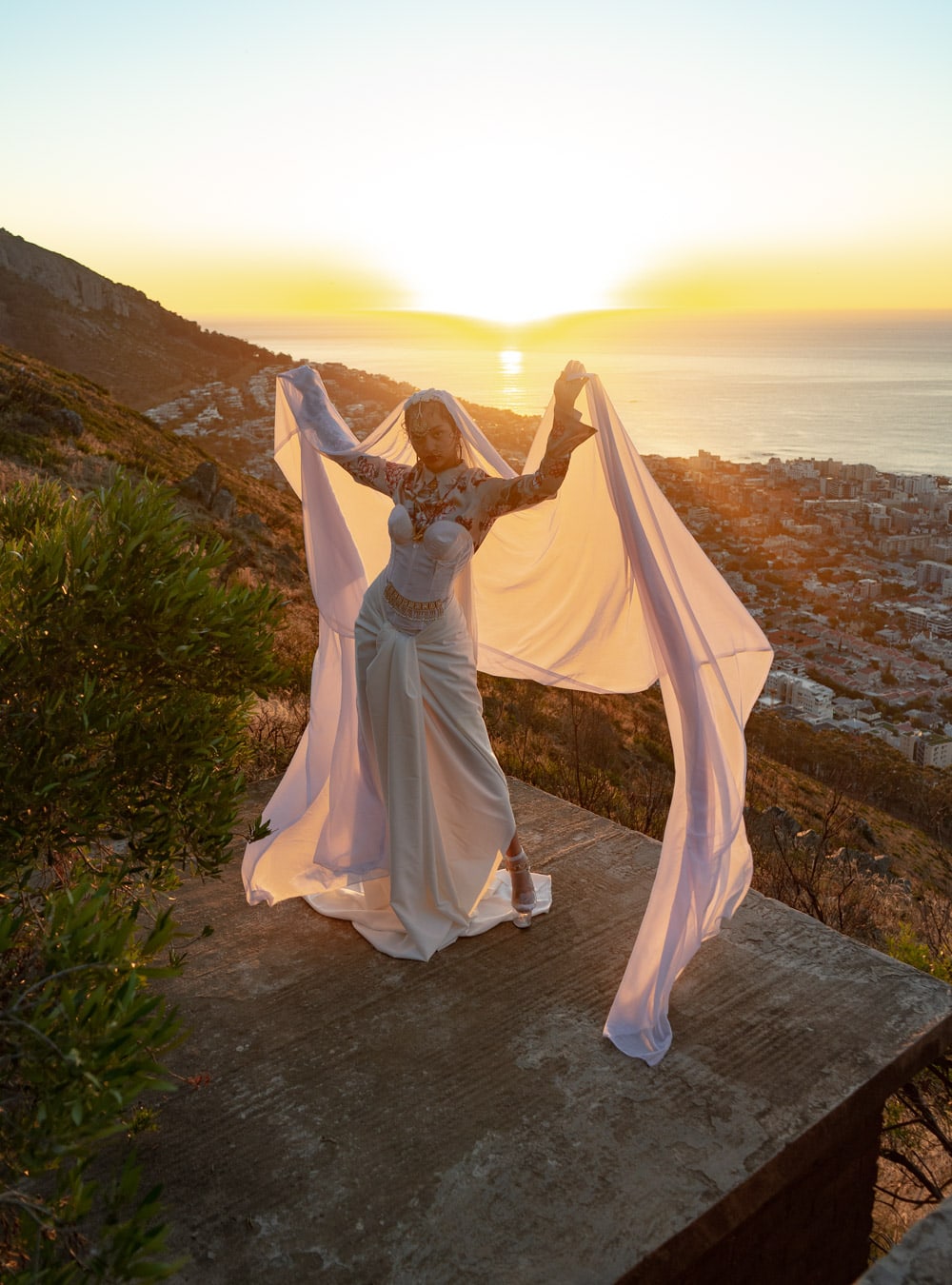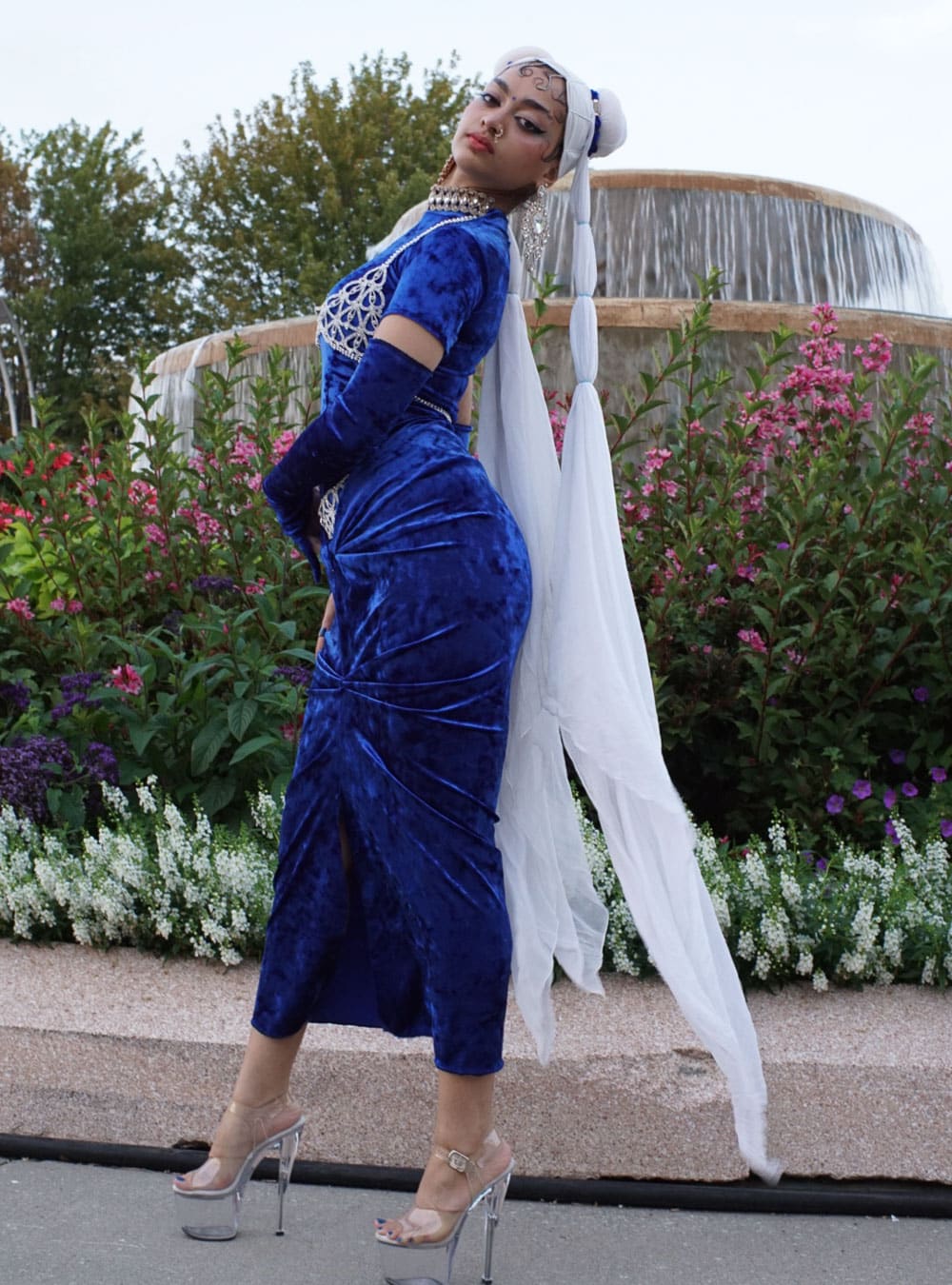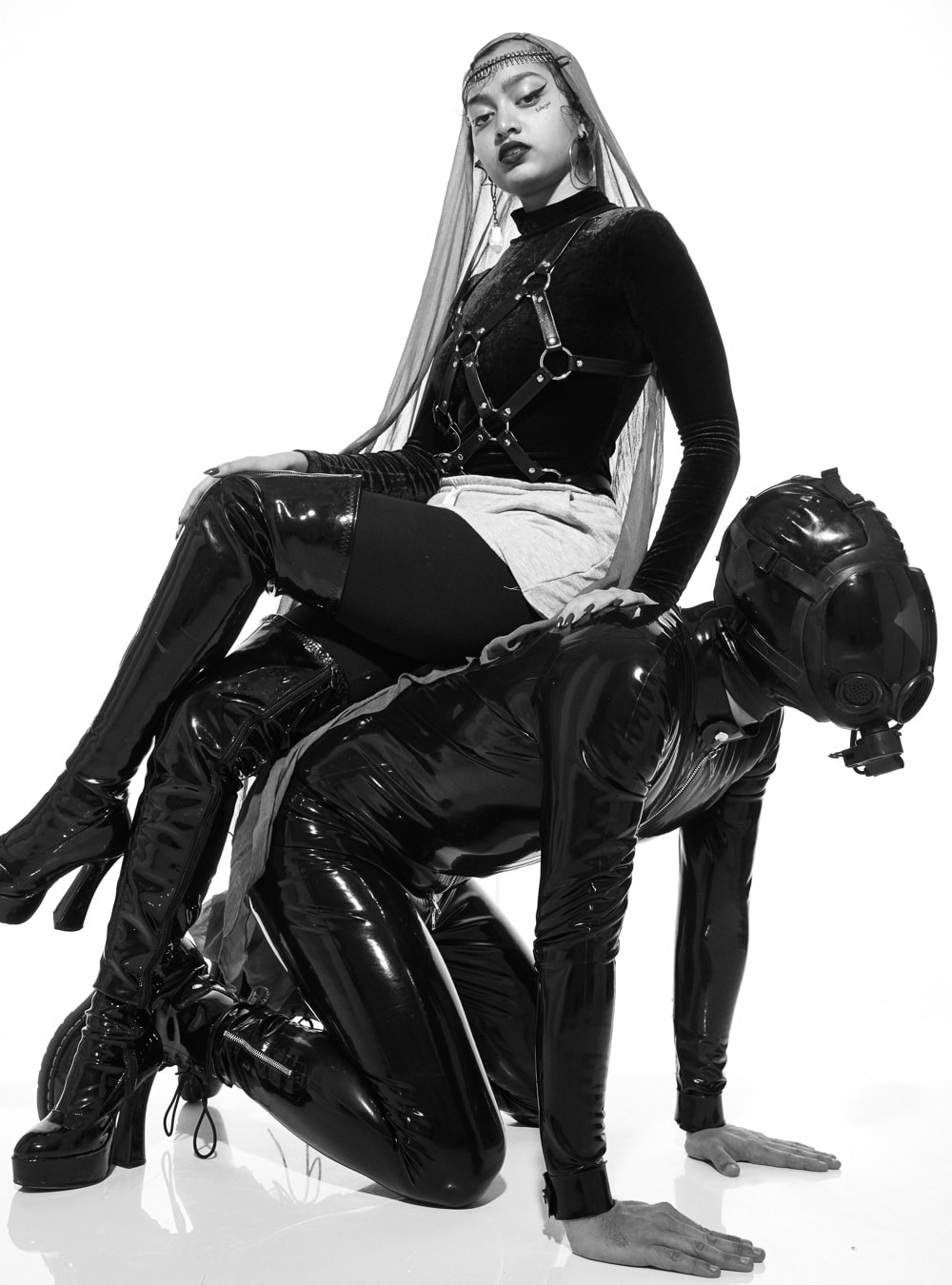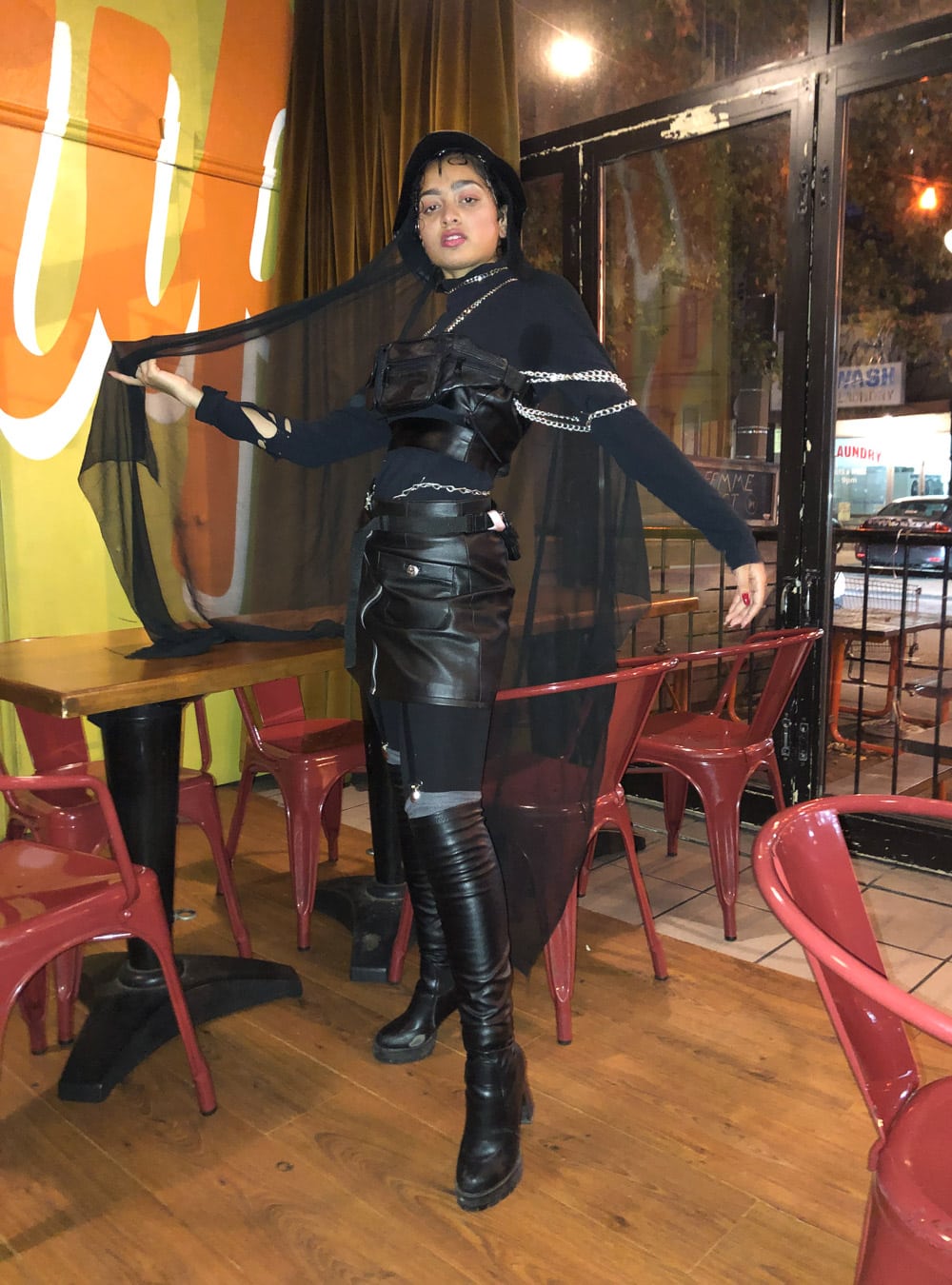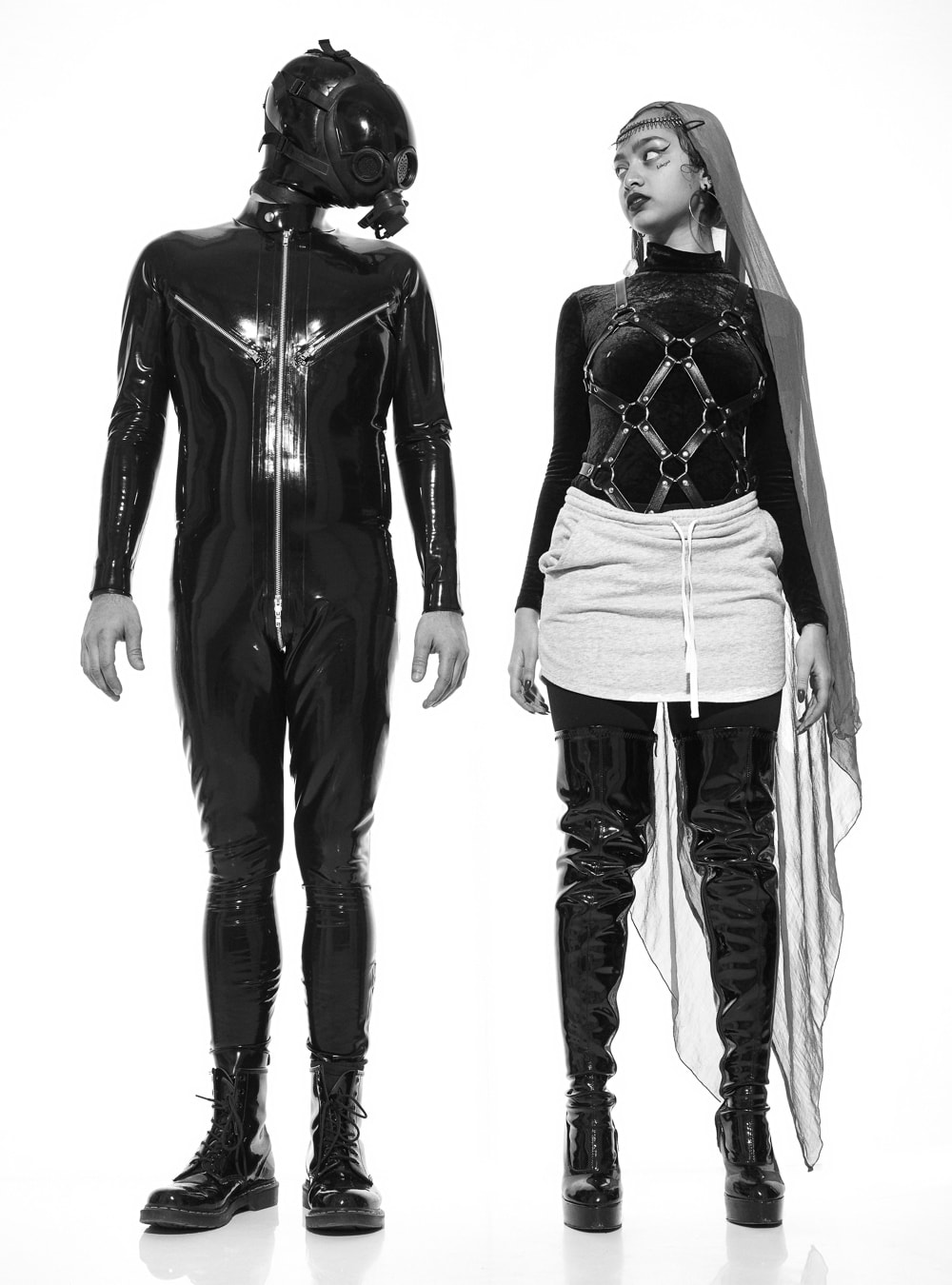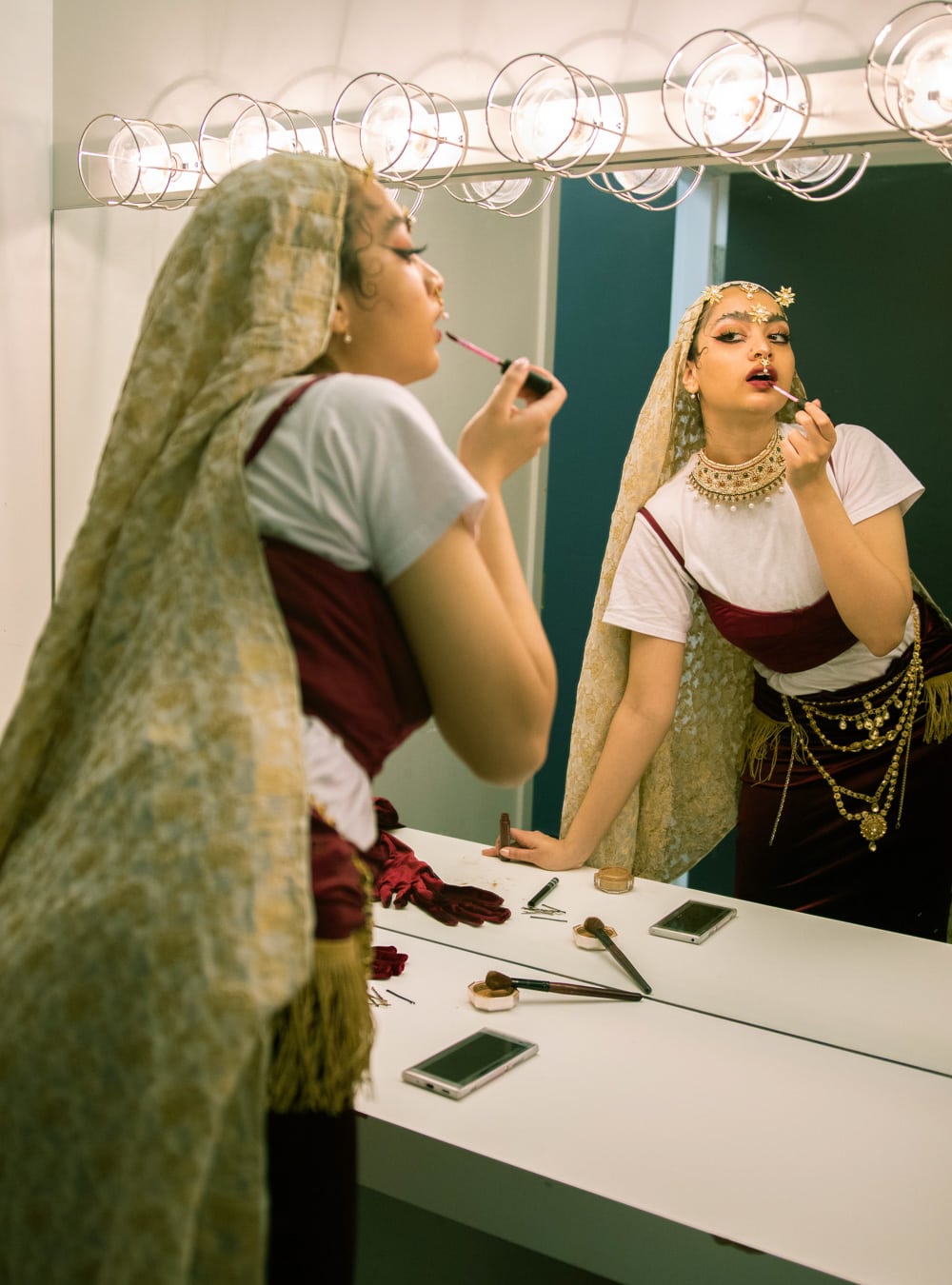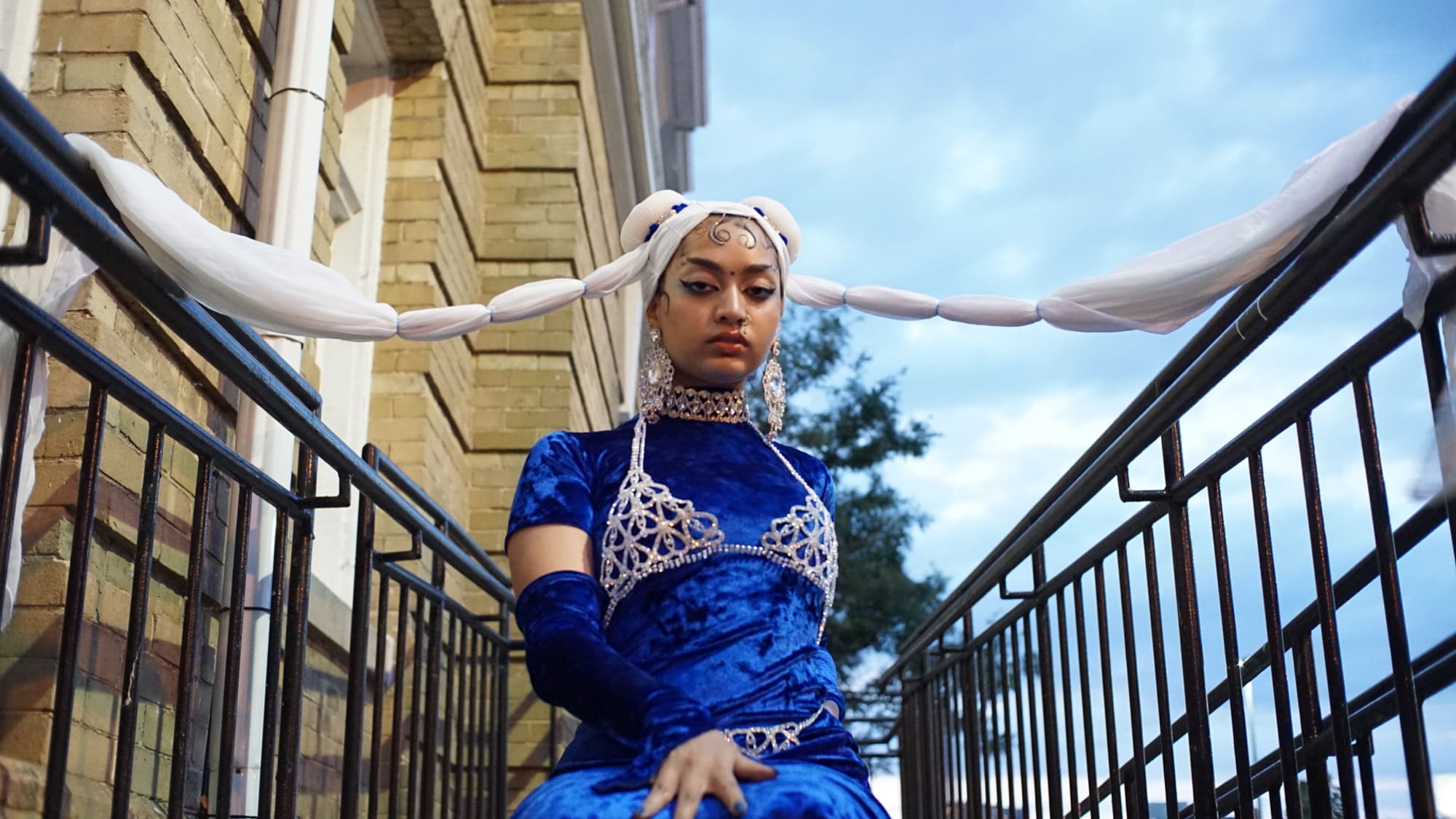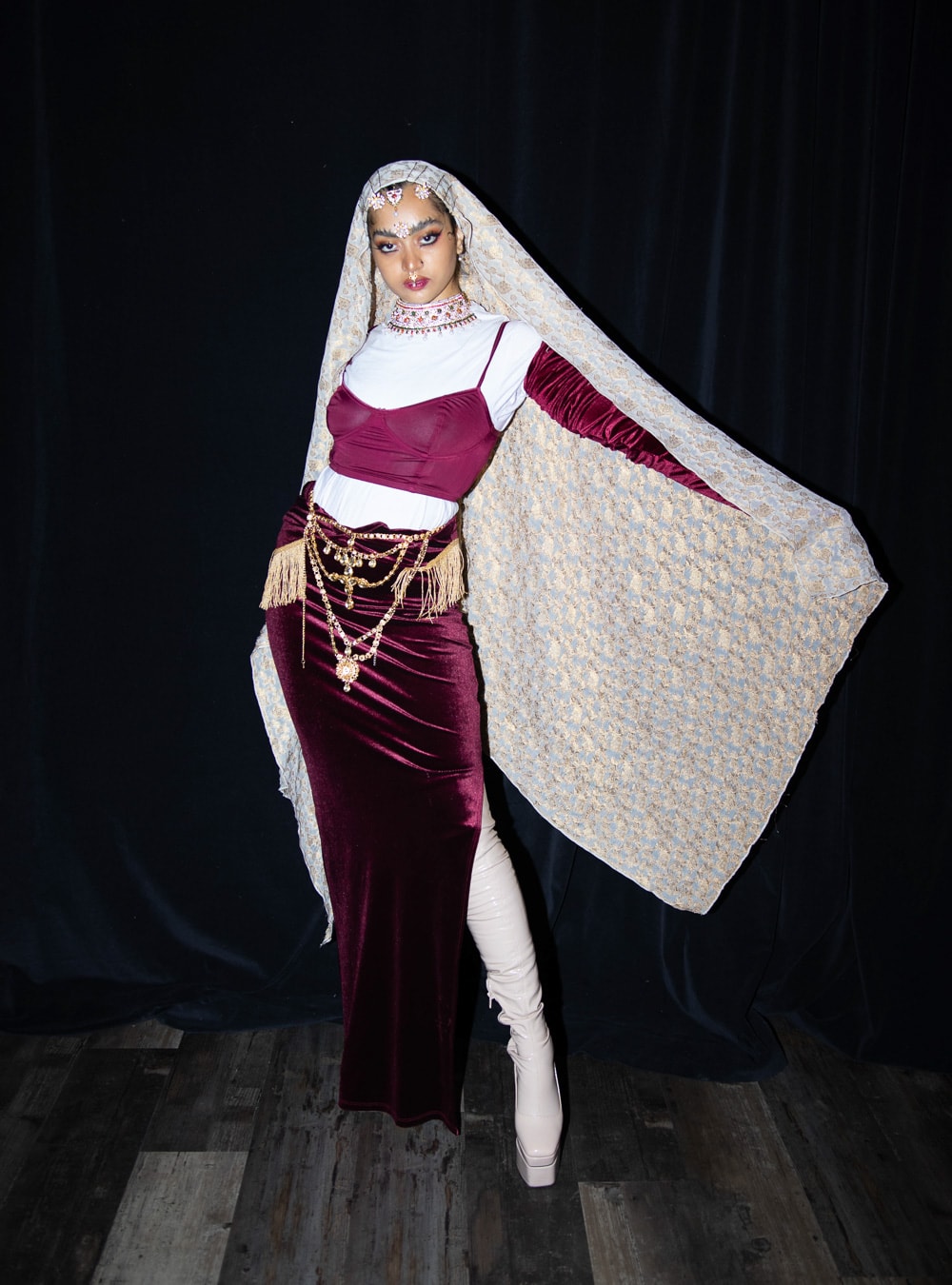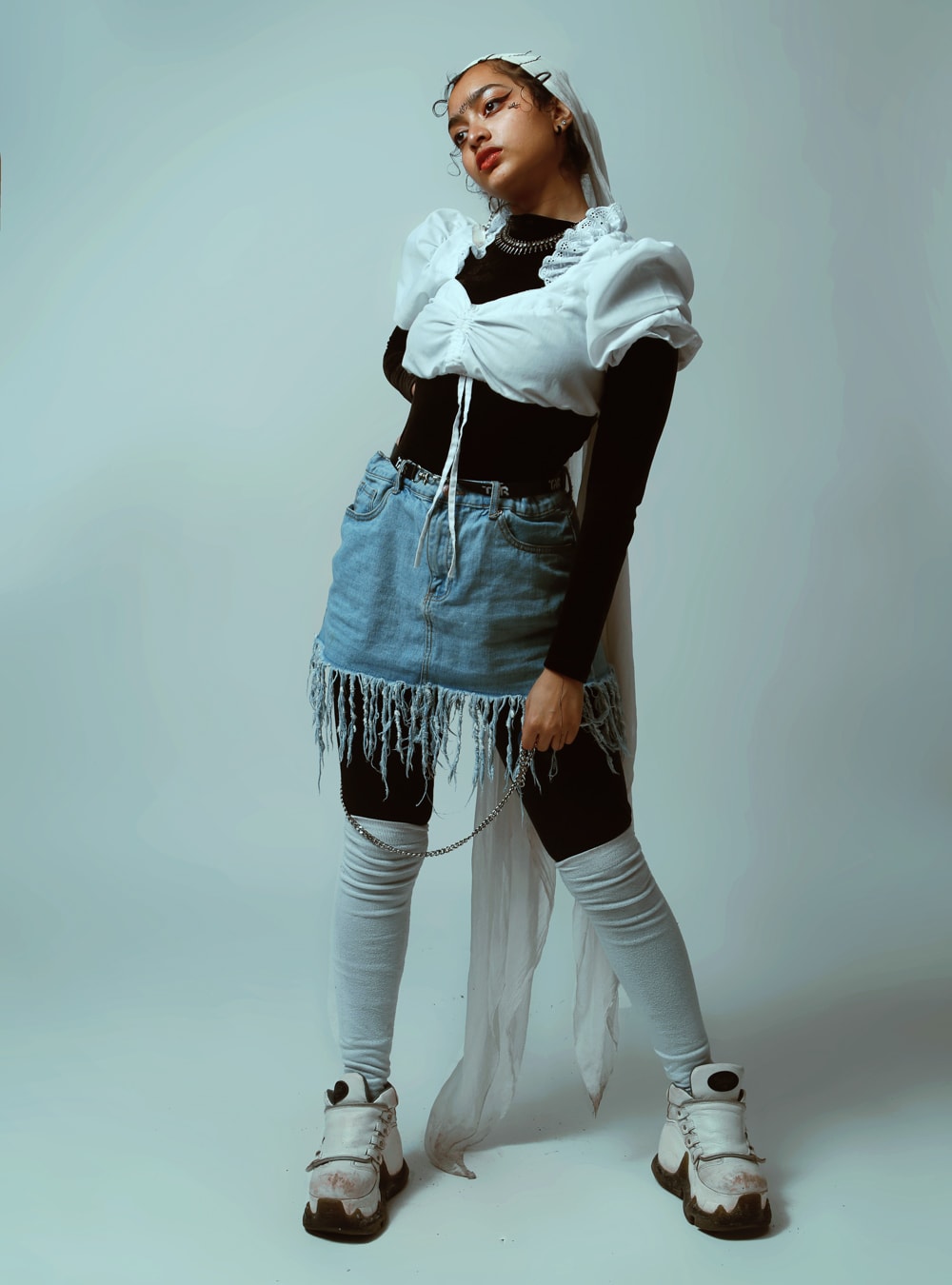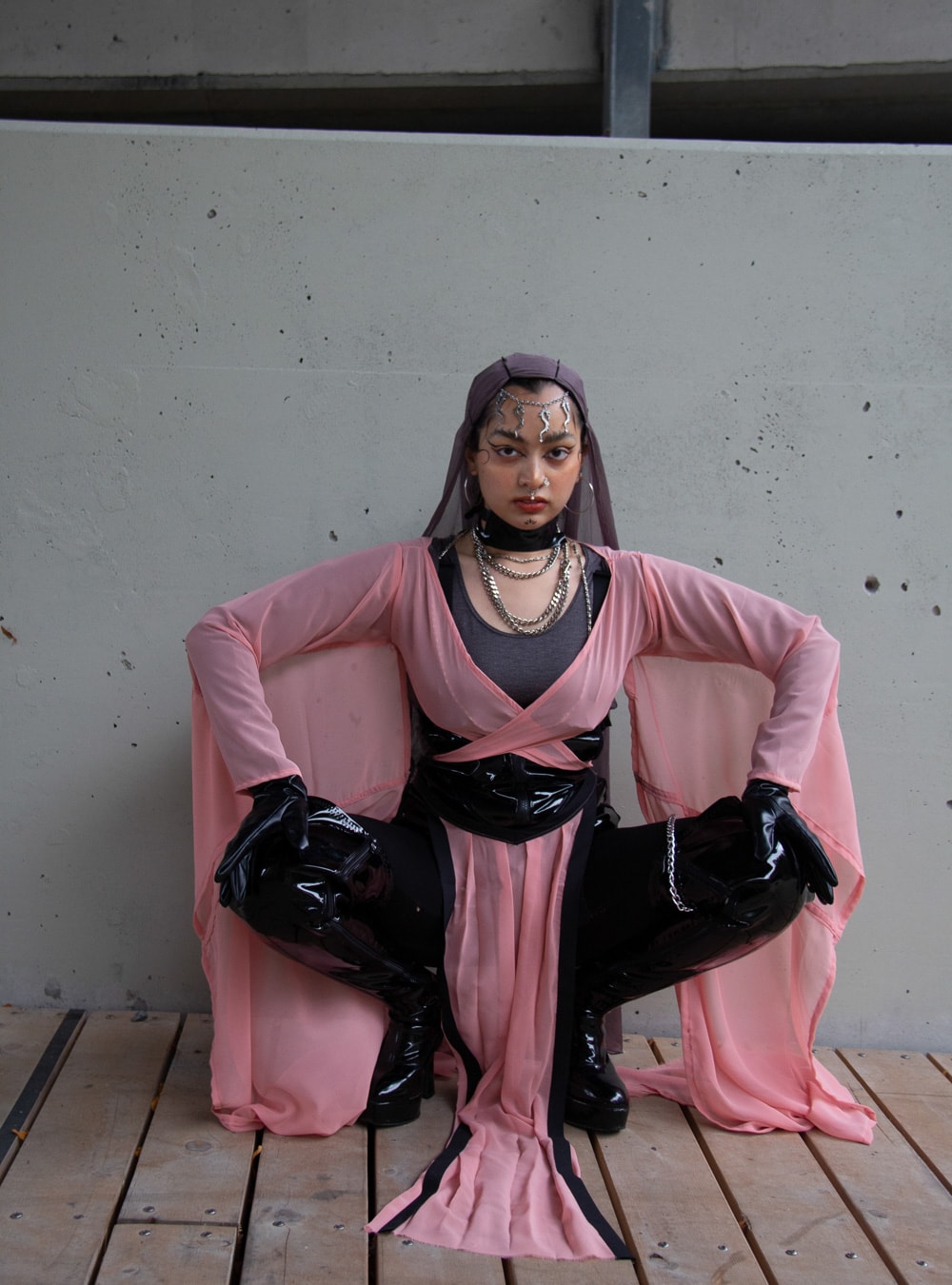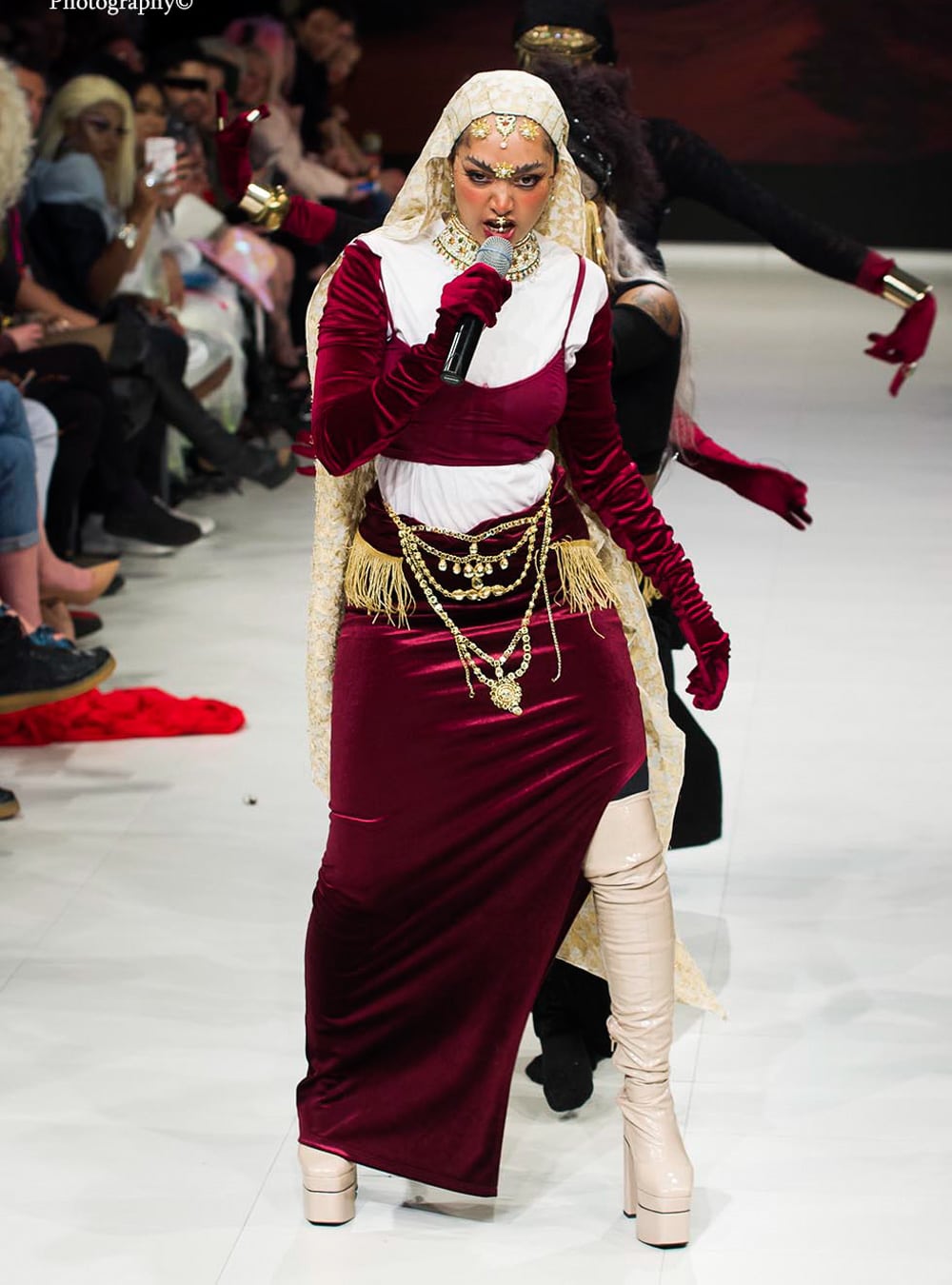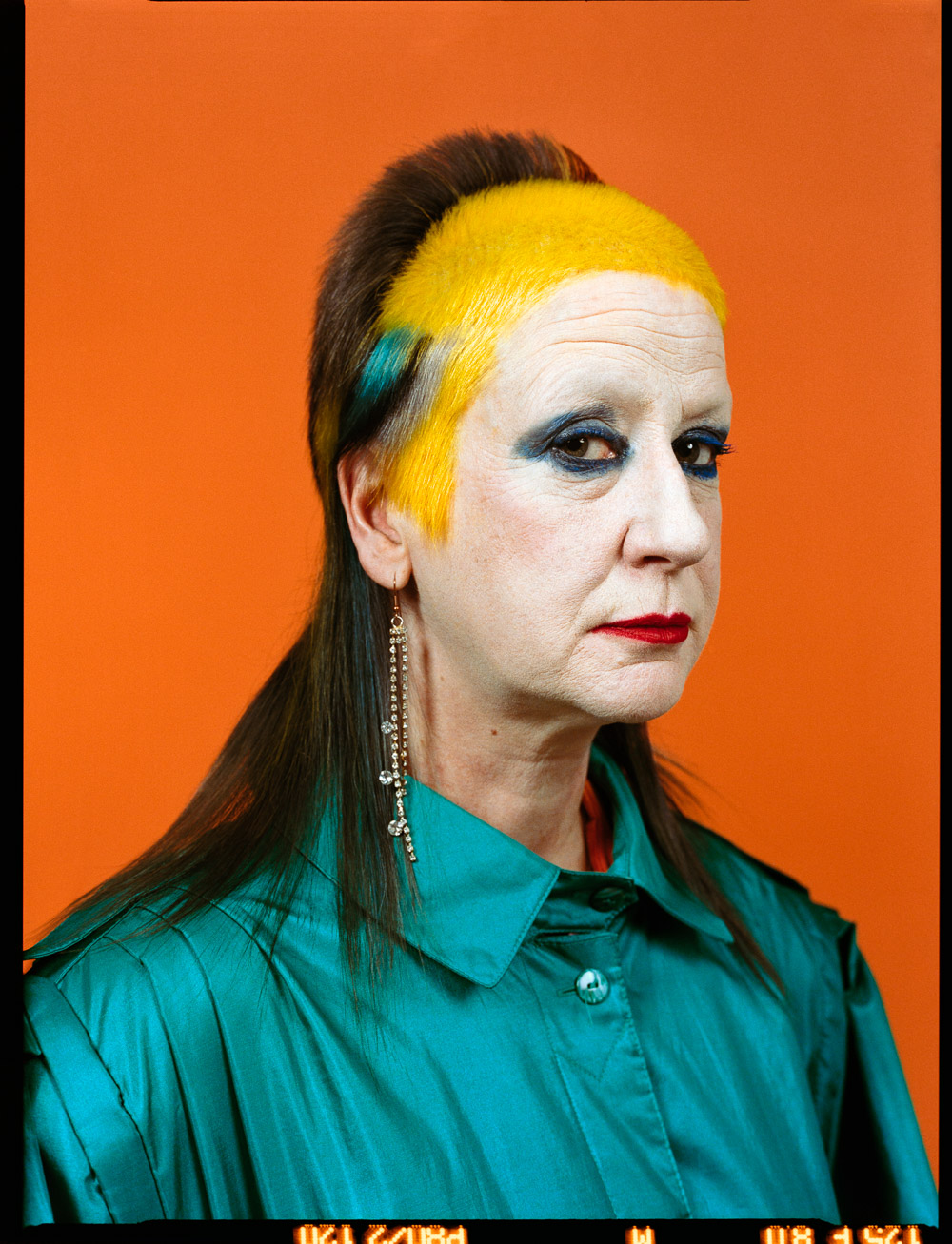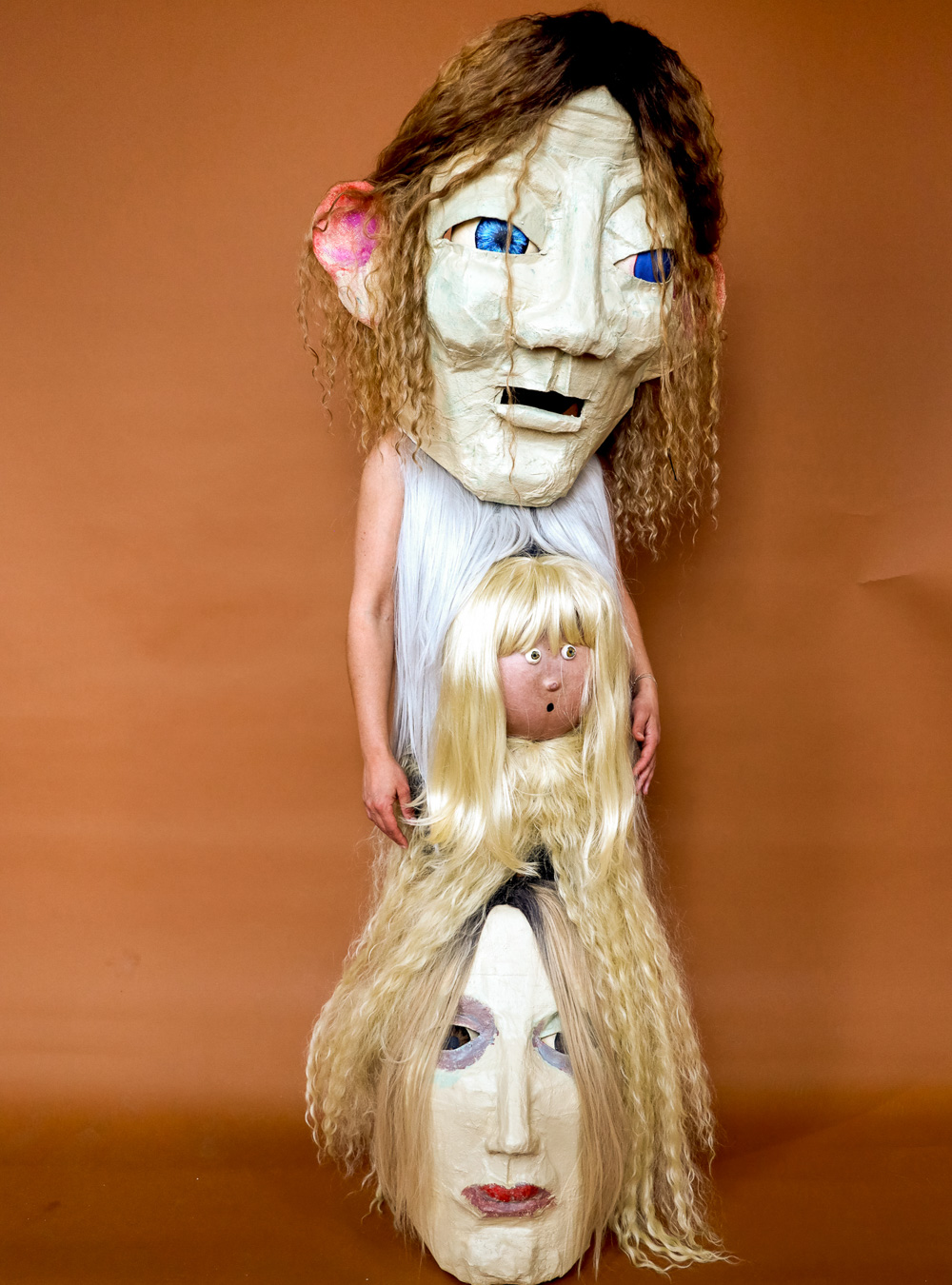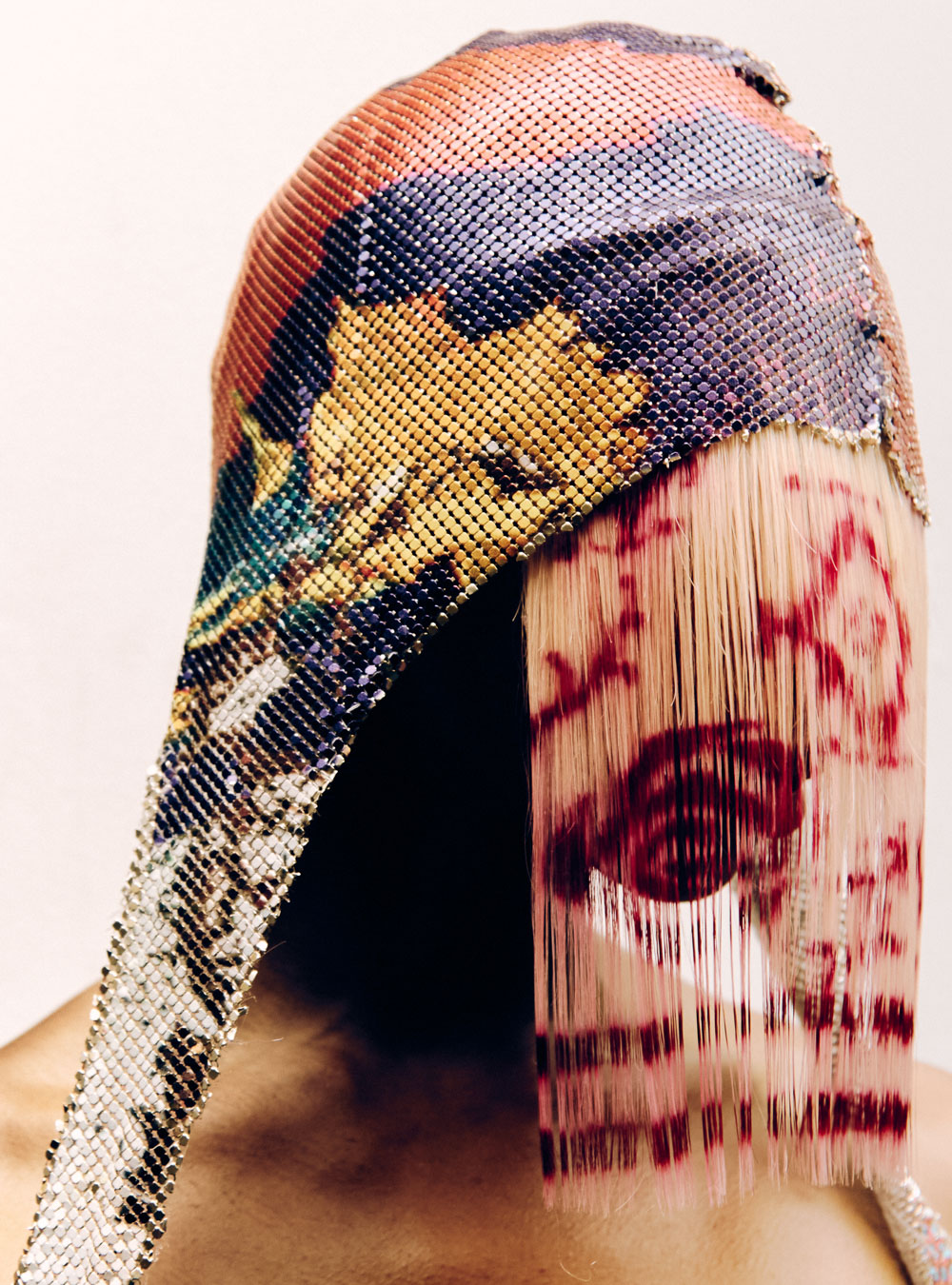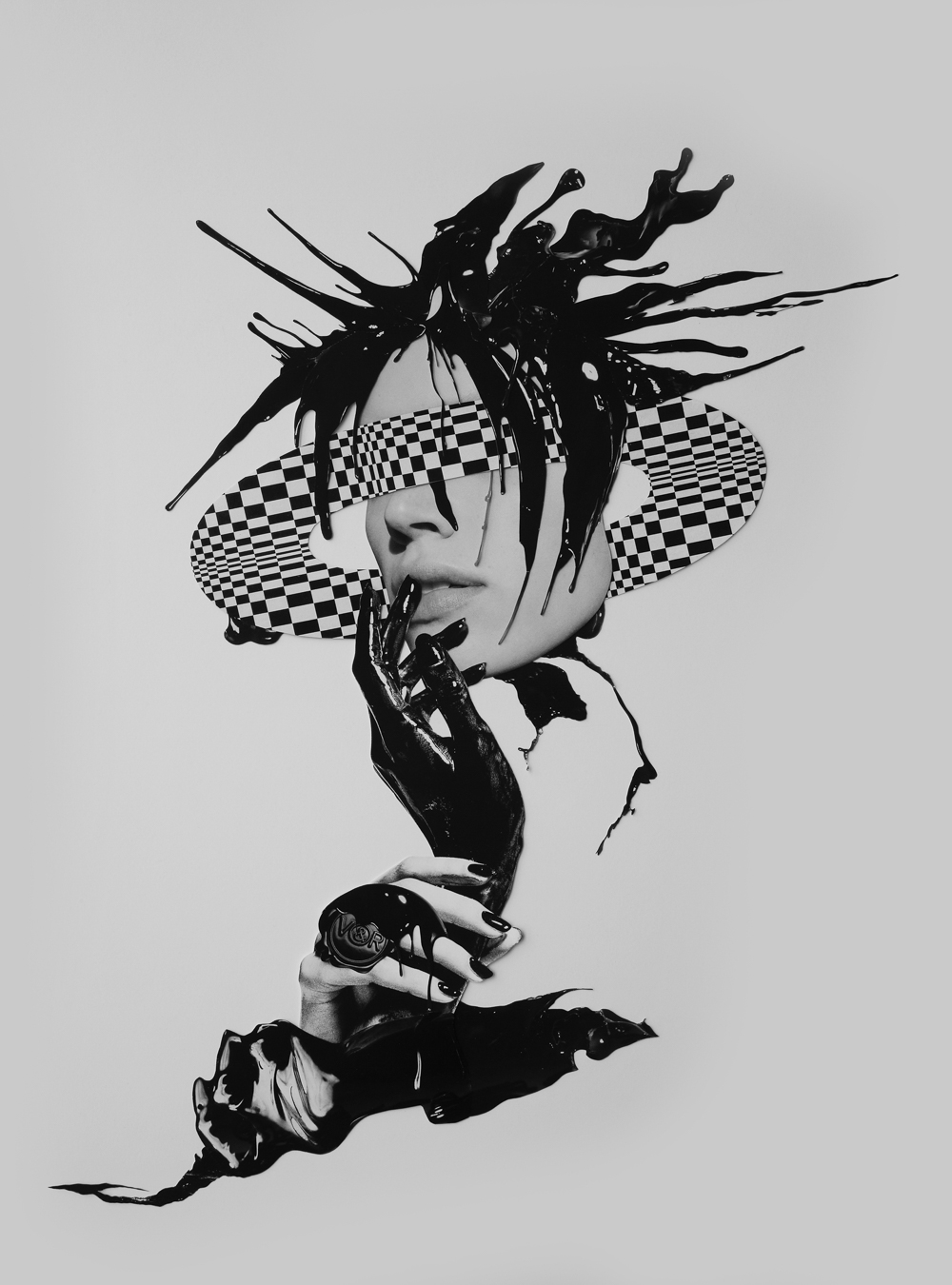- SuKha
- SuKha
- SuKha
PEOPLE: Cross-media performance artist SuKha mimics flowing hairstyles with scarves, intermingling references to South Asian femininity with the subcultures that inspire her work
Artist: SuKha
Photography: SuKha, Sherlon Charles, David Kidd, Haneem Christian, Marcus Cahuas, WarmRubrette, Laura for Fashion Art Toronto, Zain for Fashion Art Toronto
Interview: Hasadri Freeman
Ranging from high femme to goth to anime-inspired, the mononymous SuKha (@sukhaneverdies on her social media platforms, where she’s amassed a hefty following across Instagram and TikTok) creates detailed and dramatic experimental “hair”-styles out of headscarves. SuKha’s taste in clothing and music have been inspired by her complex and multifold ethnic identity—the Saudi Arabian-born recording artist and fashion designer is influenced by her unique upbringing as a Bangladeshi immigrant to Canada—as well as her childhood exposure to the glamour of Bollywood music videos, heavy metal, hip-hop, and Arab and Bangladeshi culture.
But the artist resents being placed in any box: “I get really angry when people expect me to be the image of a “liberated” Muslim woman, because Muslim women do not need liberation. Choosing to sexualise or desexualise yourself is up to you. It is an art form to play with clothes and to manipulate your image. It is the job of an artist to deconstruct and criticise societal expectations to provide deeper understanding of our being and what it means to be a community.”
This is reflected in the layered meaning with which she imbues her styles, which can largely be seen as performances—in her own words, “I’m an artist with my scarves and clothing, and I feel like my being could be a performance art.”
How would you describe your headpieces, in your own words? When someone looks at me with a scarf on my head, showing barely any skin, and then pair both of those things with my ethnicity, they automatically assume that I am wearing a hijab. It gets very confusing when they see that my scarf styles do not conform to the stereotypical image of a hijab, and even more confusing when they see me wearing fitted clothes, or bralettes and thong straps, layered over top of other clothes.
I like to call what I wear on my head what it is—just a scarf. I do not claim the term “hijab”. Although I am a Muslim who grew up wearing and claiming the hijab from a young age, I always had a conflict with the surveillance I received from both Western (non-Muslim) society and from my own Muslim community. Both constantly had a say in what I’m wearing, why I’m wearing it, how I should be wearing it, without ever asking me what I want, or realising that I am entitled to my own thoughts and choices.
"I draw inspiration from various long hairstyles, and mix this with how South Asian women drape scarves over their head and body. I love to replace 'hair blowing in the wind' with 'scarf blowing in the wind'"
“Hijab” is an Arabic term for a curtain, or a veiling, referring to both the physical, mental, and spiritual action of being modest; modest in one’s pride, in vanity, etc. and extends to the clothing guidelines to purposely dress in a desexualised manner. Over time, as I grew more into myself, I disassociated from the hijab because I could not naturally uphold these standards. However, it is important to understand that a scarf on someone’s head is not a measure of their spirituality or a “passport” to Islam. I am so used to wearing a scarf, having done it since the age of 9, that it feels impossible to part with it without losing a part of who I am. Hence, my scarf style continues to evolve with me.
Is there a degree of movement and motion inherent to hair that you feel you regain when making these ‘hair’ styles out of a headscarf? I draw inspiration from various long hairstyles, and mix this with how South Asian women drape scarves over their head and body. I love to replace “hair blowing in the wind” with “scarf blowing in the wind”. I do show parts of my hair within my scarf styles, such as my edges or curly bangs—however, the rest of the style is manipulated by how I tie my hair underneath. For example, to create a scarf style that contains two buns, I first have to create two space buns with my hair.
The movement and motion of the scarves are entirely dependent on the type of material the scarf is made of. My personal favourite is the use of light, airy, chiffon scarves because they catch the wind and every soft movement dramatically.
Many of your styles could be described as femme, even hyper-femme in some cases. However, Western hegemonic femininity is often different from traditional displays of femininity the world over. Do you find yourself drawing on Western or non-Western traditions, one more than the other? The West has a politicised perception of brown and black women who choose to wear clothes from their own culture, or who choose to dress in a manner that does not conform to the Western male gaze.
There is a huge discrepancy between how the West wants me to dress and how the Muslim community wants me to dress, but in my opinion, they are both based on the male gaze: both revolve around the idea of my female body as a symbol of sex. I rebel against both communities and am always appalled by both their entitlement and their emotional responses.
I admire the ability to play with the ideas of sexualising and desexualising the woman’s body based on the male gaze. Freedom does not come from wearing less or wearing more, but rather a person’s ability to think for themselves, choose for themselves and explore their identities and artistic capacity.
Many hair creatives we’ve spoken to in the past have mentioned that they perceive hair as a fabric rather than a body part—what are your thoughts on this? I think that statement is quite accurate because both hairstyles and scarf-styles can be manipulated to enhance the face or express art. I think a lot of my scarf-styles do replicate hairstyles, whereas instead of working with strokes of hair, I use the material-type to determine the types of drapes.
What are your biggest style inspirations? Do you draw on any particular subculture(s)? I have always been fascinated by how much a character’s outfit said about their personality in Anime. The experimental aspect of it and the confidence and personality that their outfits radiate, as well as the visual drama of their hairstyles, continue to inspire me forever.
Who are some creatives you recommend everyone should be aware of? The OG of creating anime-inspired scarf styles is Saima @SaimaSmilesLike. She is also of Bangladeshi descent, living in the UK. She’s really worked hard to make a platform for herself by crafting scarf-styles far more complex and unique than mine! Another very talented artist in the scarf-styling game is Zahra Aasiyah @aasiiyah on Instagram. No matter how many compliments I give her, it will not be enough. She’s the creator of “Higs”, the very first, custom slip-on hijabs, which one would wear the same way that one wears a wig. She’s also been doing a series, #100differentwaystocoveryourhead which is an artistic and playful interpretation of “hijab” styles.
You’re a fashion designer, recording artist, and in some ways because of your online presence, a performance artist. How do these aspects of your artistry work together and influence each other? The “artistic calling” that people talk about is true—I feel as though I’ve had a natural inclination to arts and fashion from a very young age. It really helps that I’ve always had a personality where I loved the attention and affection of people, which evolved into something that I can attain appropriately through doing what I love.
You have a beautiful and prolific online presence. How do you feel this has helped your self-expression, and diversified the representation of Muslim women, and ‘brown girls,’ as you describe yourself? How do you feel it has curtailed it? As a child and throughout my adolescence, I had never seen anyone dress like me or had seen any form of alternative styles performed by brown people. When I was a young dependent with no funds, I would go online to use RPGs to express my style via avatars and befriend people whose avatar’s styles I admired. As I grew up and acquired both independence and money, I found a way to express my avatar’s style on myself. Social media became a gateway for me to find friends who also express themselves uniquely. It’s like a real-life RPG game, where we are our own avatars. It’s significantly boosted my confidence because I’ve found a community who can accept me for who I am. I no longer have to dress up as an act of rebellion, but as an act of true self-expression. Other folks who continue to explore their art and improve their fashion/art form inspire me to continue to push my own limits.
"Both [communities] constantly had a say in what I’m wearing, why I’m wearing it, how I should be wearing it, without ever asking me what I want, or realising that I am entitled to my own thoughts and choices."
I hope that people understand that Muslim women are not copy-paste, or as perfectly pious as we are stereotypically expected to be. Western media often dehumanises Muslim women as victims, with no power or say in our own actions or in decisions to be Muslim. Islam is a religion that I follow by choice, which I know comes with a culture of heavy expectations. There are struggles that are unique to Muslims, and we are highly capable of dealing with them without interference from the West, or even other Muslim folks. It is up to Muslim women and Muslim Queers to support each other and understand each other.
A huge point I want to address, is that I get really angry when people expect me to be the image of “liberating” Muslim women, because Muslim women do not need liberation. Choosing to sexualise or desexualise yourself is up to you. It is an art form to be able to play with clothes and to manipulate your image. It is the job of an artist to deconstruct and criticize societal expectations to provide deeper understanding of our being and what it means to be a community.
- ANTHROPOLOGY OF HAIR
- ANTHROPOLOGY OF HAIR
- ANTHROPOLOGY OF HAIR
- ANTHROPOLOGY OF HAIR
- ANTHROPOLOGY OF HAIR
